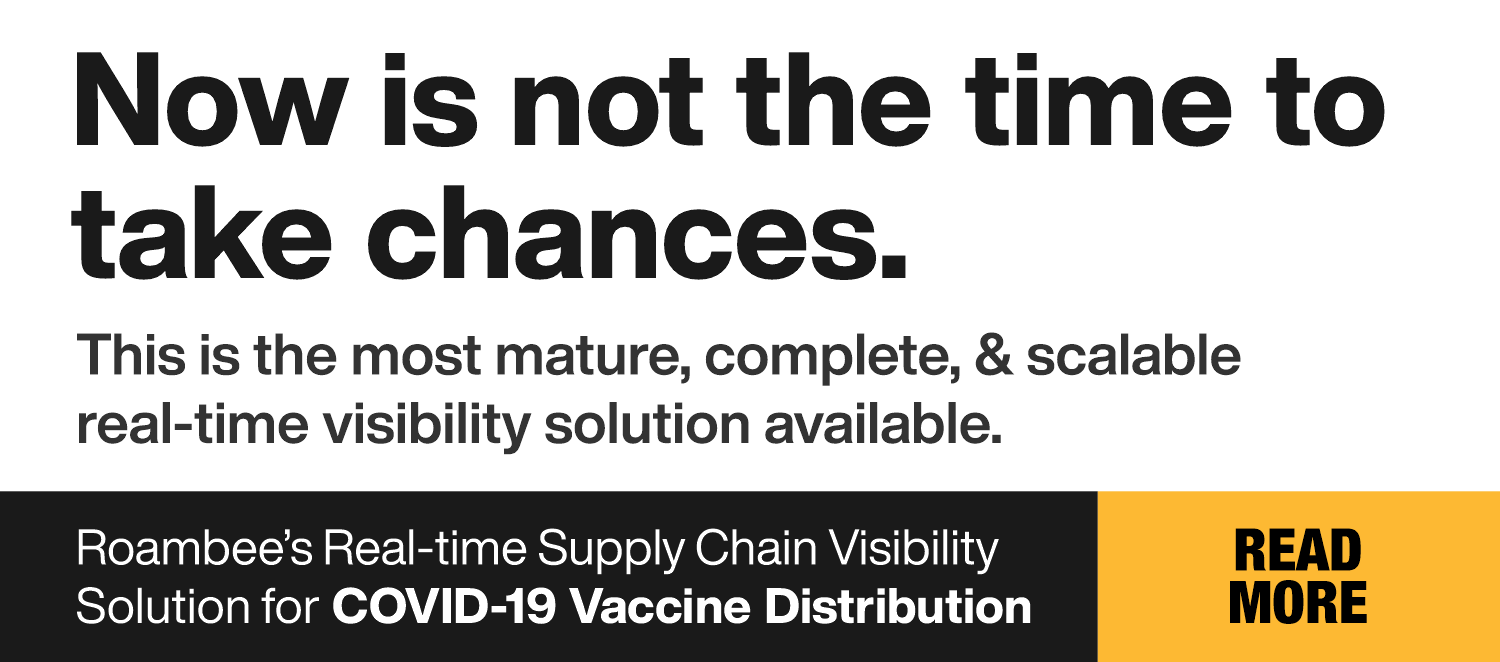Distributing the COVID-19 vaccine will be unlike previous vaccine distribution efforts due to its scale and urgency.
The Coronavirus disease (COVID-19) vaccine will leverage new distribution approaches, so monitoring its physical integrity through the supply chain from manufacturing to point of use will also require fresh thinking. With a lot at stake for all parties involved such as states, regulators, pharmaceutical companies and the general population, the margins for error in delivering a vaccine promptly and with uncompromised efficacy have never been tighter.
COVID-19 Vaccine’s Unique Integrity Challenges
Distributing the COVID-19 vaccine will be unlike previous vaccine distribution efforts due to its scale and urgency. These key factors will provide new challenges for pharmaceutical companies and the logistics companies that will support them.
1. Unprecedented Speed to Market
Multiple COVID-19 vaccine development efforts are happening today at a swift pace, that is expected to accelerate throughout manufacturing and distribution. Unlike other vaccines such as the Hepatitis, Polio, or even the seasonal flu vaccines, test data on temperature excursions affecting the efficacy will be limited and the COVID-19 vaccines will have to be shipped under ideal conditions. Therefore, speed to market and maintaining cold chain integrity will be bigger considerations for all actors in the supply chain than distribution cost or logistics efficiency.
2. Unfamiliar Shipping Networks
The demand for the COVID-19 vaccine is not specific to a certain demographic or region, unlike traditional vaccines. Vaccine supply chain actors will be shipping to new customers through unfamiliar trade lanes, using new transporters, and using new shipment modes. Vaccines will be distributed to new or unfamiliar storage facilities, in geographies that may not be familiar with modern cold chain management. The vaccine supply chain will be stretched to meet demand at a national, continental and global scale requiring multi, inter, and intra modal means of shipping all without typical supply chain planning and evaluation periods.
3. Unmoderated Scale-up
COVID-19 vaccines will require shipping at scale from day 1. Unlike traditional vaccine supply chains which begin with lower doses shipped to established regions, the COVID-19 vaccine will require full-scale manufacturing and distribution from the start. When combined with the use of unfamiliar networks, the amount of risk entailed in the process is multiplied.
These unique challenges will force the industry to rethink traditional approaches to vaccine cold chain and shipment monitoring. COVID-19 vaccine manufacturers and shippers cannot settle for accepting or rejecting goods upon arrival and they cannot rely on touchpoints in the chain of custody to provide information. They will need to act in real-time, take pre-emptive measures and guide people downstream proactively.
The Monitoring Approach Needs Fresh Thinking
The COVID-19 vaccine supply chain requires a top-down monitoring approach that doesn’t rely on the touchpoints in the chain of custody for information. It requires real-time signals generated by the vaccine shipments which can be shared with all actors within the chain of custody, much like a reverse blockchain system for physical integrity. However, current vaccine cold chain monitoring methods largely work in a bottom-up manner with many dependencies, making visibility time delayed, incomplete or unverifiable.
1. Time-delayed Visibility
Data loggers can track the temperature of a vaccine shipment accurately, but the data is typically collected only upon arrival. The captured data is manually uploaded in most cases, creating room for error that could impact the efficacy of the vaccine if some vials slip past the distribution chain. Even if the data is collected without lapses, its value is restricted to determining whether to accept or reject a shipment upon arrival; it cannot prevent a stockout as it cannot provide early warning signals.
2. Incomplete or Unverifiable Visibility
While GPS tracking solutions can provide vehicle-level visibility, it cannot provide condition and does not work for multimodal shipments. Visibility aggregators have done some work in aggregating ELD, flight, and vessel data to offer a level of unified shipment visibility but this data still does not provide location and condition that is truly live or verifiable. There could be lanes or touchpoints which are not integrated. There could be errors and delays caused due to manual updates especially in multimodal shipping scenarios like air shipping.
The monitoring approach fit for COVID-19 must address this through real time on-demand goods and asset monitoring, creating a push mechanism that gives vaccine supply chain actors uninterrupted end-to-end visibility.
A Vaccine Monitoring Approach Fit for COVID-19
The ideal approach must enable actors in the COVID-19 vaccine distribution chain to own their visibility initiative across all touchpoints. It should provide real-time, on-demand signals that puts vaccine makers and shippers in control from manufacturing to point of use.
It will achieve this by integrating first-hand location and condition data collected in real time using NIST-certified sensors that work multimodally, globally and at a package level – indoors, outdoors and in-transit. It will also leverage sensors that are purpose-built for air cargo monitoring and are compliant with all regulations including those that pertain to the quantity of sensors usable per Airway Bill, whilst providing unrestricted shipment granularity.
This approach will also be CAPEX-free and incorporate management of reverse logistics where required thus enabling vaccine manufacturers and shippers to scale without upfront investments or sensor-management hassles in a truly on-demand manner that is deployable in days.
Finally, and crucially, the ideal approach will leverage first-hand sensor data to help all actors in the vaccine logistics chain of custody own their visibility across all touchpoints whilst staying 21 CFR Part 11-compliant and interoperable with existing technology stack enabling a single-pane experience.
With this robust end to end monitoring approach, regulators, manufacturers, distributors and third-party logistics companies in the COVID-19 vaccine supply chain can address the unique challenges.
This article was originally featured on Supply & Demand Chain Executive (www.sdcexec.com).














